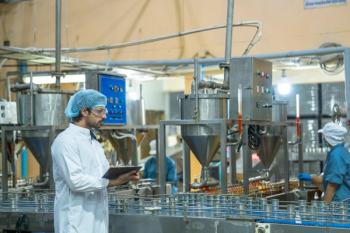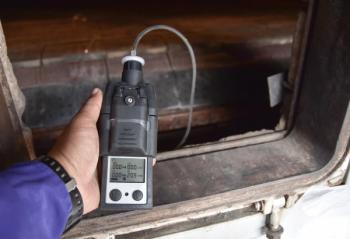
Spectroscopy Mini-Tutorials: NIR, Raman, O-PTIR, and Chemometrics for Food, Environmental, and Biomedical Analysis
Key Takeaways
- NIR spectroscopy and aquaphotomics enable rapid, non-invasive analysis of biofluids and food, identifying disease biomarkers and contaminants with high accuracy.
- Raman spectroscopy combined with machine learning enhances detection of pesticides and microplastics, offering automated classification and real-world chemical monitoring.
This curated collection of recent Spectroscopy magazine mini-tutorials highlights the latest analytical and data-driven innovations in vibrational spectroscopy. Covering NIR, Raman, O-PTIR, and related optical methods, the series emphasizes practical workflows, emerging machine learning integrations, and advanced chemometric techniques for real-world laboratory applications—from food and environmental monitoring to biomedical analysis and nanoscale imaging.
Introduction
The Spectroscopy Mini-Tutorials series presents concise, practice-oriented guides designed for researchers, laboratory scientists, and analytical chemists seeking to apply cutting-edge spectroscopic and chemometric tools. Each tutorial focuses on practical implementation, combining experimental methods with data analytics, and offering clear insights into new developments across the spectroscopic sciences.
Recent installments explore topics ranging from near-infrared (NIR) spectroscopy for honey authentication and aquaphotomics for biofluid analysis, to Raman-based machine learning (ML) for pesticide and microplastic detection. Other contributions introduce transformative techniques such as optical photothermal infrared (O-PTIR) spectroscopy, complex-valued chemometrics, and tip-enhanced Raman scattering (TERS), expanding the analytical capabilities of modern laboratories.
Together, these tutorials illustrate the dynamic intersection of spectroscopy, artificial intelligence (AI), and molecular science—showcasing how researchers are redefining precision measurement, chemical imaging, and real-time material characterization across diverse applications.
This tutorial introduces how NIR spectroscopy works for honey analysis, explores practical workflows, discusses real-world applications, and outlines best practices for implementing this technique in food labs (1).
Using a custom-built 785 nm Raman instrument, a recent study identified 14 pesticides and employed multivariate and machine learning techniques—particularly Random Forests (RF)—to automate classification. Readers will learn practical steps in spectral acquisition, spectral comparison across wavelengths, data preprocessing, and implementing machine learning models for real-world chemical monitoring (2).
This tutorial guides spectroscopy practitioners through the integration of Raman spectroscopy and machine learning (ML) techniques for detecting microplastics (MPs) in aquatic and environmental samples (3).
Near-infrared (NIR) spectroscopy combined with aquaphotomics shows potential for a rapid, non-invasive approach to detect subtle biochemical changes in biofluids and agricultural products. By monitoring water molecular structures through water matrix coordinates (WAMACs) and visualizing water absorption spectrum patterns (WASPs) via aquagrams, researchers can identify disease biomarkers, food contaminants, and other analytes with high accuracy. This tutorial introduces the principles, practical workflow, and applications of NIR aquaphotomics for everyday laboratory use (4).
This review outlines the usefulness of the OH stretching bands of water in the 3800-3200 cm-1 region in probing in situ water content and functions in tissues and organs. Using the OH stretching bands of water one can probe the progress of diseases and explore the physiological conditions in tissues. Raman investigations on eye lenses, cornea, brain tissues, and skin tissues are described as examples in this review (5).
Optical photothermal infrared (O-PTIR) spectroscopy is an infrared super-resolution measurement technique where a shorter wavelength visible probe is used to measure and map infrared (IR) absorption with spatial resolution up to 30× better than conventional techniques such as Fourier transform infrared (FT-IR) and direct IR laser imaging systems.
This article introduces O-PTIR microscopy, explaining how it overcomes traditional IR spectroscopy limitations while enabling multimodal capabilities, including simultaneous IR+Raman spectroscopy and co-located fluorescence microscopy. O-PTIR overcomes key limitations of traditional FT-IR, such as poor spatial chemical resolution, time-consuming sample preparation, and spectral artifacts (6).
Researchers have introduced a simple yet powerful new rule based on Rayleigh scattering theory that accurately links the absorption behavior of composite media, like aerosols or colloids, to the properties of their nanoparticle constituents (7).
In this tutorial, Thomas G. Mayerhöfer and Jürgen Popp introduce complex-valued chemometrics as a more physically grounded alternative to traditional intensity-based spectroscopy measurement methods. By incorporating both the real and imaginary parts of the complex refractive index of a sample, this approach preserves phase information and improves linearity with sample analyte concentration. The result is more robust and interpretable multivariate models, especially in systems affected by nonlinear effects or strong solvent and analyte interactions (8).
Tip-enhanced Raman scattering (TERS), a technique that combines the advantages of scanning probe microscopy (SPM) and surface-enhanced Raman scattering (SERS), has recently been a matter of great interest because it provides site-specific information on a nano- to subnano-scale, with spatial resolution beyond the diffraction limit of light. TERS can be performed in various environments, such as ambient air, ultrahigh vacuum (UHV), solutions, and electrochemical environments. TERS has been applied in many ways, including few- or single-molecule studies, mechanistic studies of biological molecules, carbon nanotube and graphene characterization, and TERS imaging.
Ozaki proposed chemically modified TERS tips with various probe molecules to improve their sensitivity, selectivity, and stability during liquid phase measurements. These tips were, for example, employed for nanoscale pH measurement in solutions and chirality discrimination using TERS (9).
References
(1) Workman, J., Jr. Near-Infrared Spectroscopy for Honey Authentication: A Practical Mini-Tutorial for Food Quality Labs. Spectroscopy Online, July 28, 2025.
(2) Workman, J., Jr. Mini-Tutorial: Raman Fingerprinting and Machine Learning Classification of Pesticides Using a Custom 785 nm Instrument. Spectroscopy Online, August 4, 2025.
(3) Workman, J., Jr. Machine Learning Enhanced Raman Spectroscopy for Microplastics Detection in Environmental Samples: A Practical Tutorial. Spectroscopy Online, August 18, 2025.
(4) Workman, J., Jr. Mini-Tutorial on NIR Aquaphotomics for Rapid, Non-Destructive Biofluid and Food Analysis. Spectroscopy Online, September 9, 2025.
(5) Sato, H.; Ozaki, Y. Tutorial Review: The Use of the OH Stretching Bands of Water in Biomedical Applications of Raman Spectroscopy. Spectroscopy Online, July 30, 2025.
(6) Prater, C.; Cheng, J.-X. An Introduction to Optical Photothermal Infrared (O-PTIR) Spectroscopy. Spectroscopy Online, September 22, 2025.
(7) Workman, J., Jr. Scientists Unveil Better Mixing Rule for Absorption Spectroscopy of Aerosols and Colloids. Spectroscopy Online, June 16, 2025.
(8) Mayerhofer, T. G.; Popp, J. Complex-Valued Chemometrics for Composition Analysis. Spectroscopy, 2025, 40 (6), 16–21. DOI:
(9) Ozaki, Y. Tip-Enhanced Raman Scattering Using a Chemically-Modified Tip. Spectroscopy, 2025, 40 (6), 12–15. DOI:
Newsletter
Get essential updates on the latest spectroscopy technologies, regulatory standards, and best practices—subscribe today to Spectroscopy.





